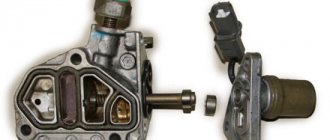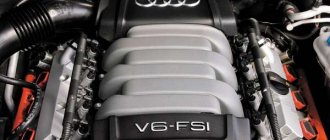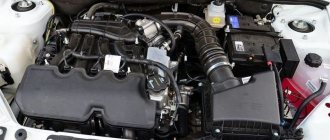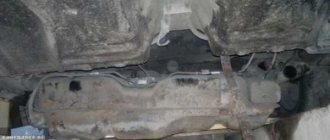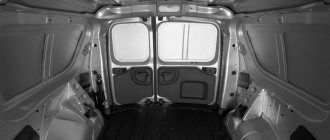A roomy station wagon called Lada Largus is nothing more than a modified Dacia Logan MCV model. Renault offered different engines in its station wagons - from 1.4-liter to 1.6-liter 8 and 16-valve internal combustion engines. Two of them were initially available on Largus. We are talking about the K7M and K4M engines, and the volume of each was 1.6 liters. You can find out what engine is installed on the Lada Largus now from the text. Let's say right away that the K7M 8-valve engine received a replacement, and the licensed production of the K4M internal combustion engine was established at AvtoVAZ.
Largus with 8-valve "11189" are already being produced. The proof is in the video.
Just the facts (compression ratio, technical specifications)
Renault's 16-valve petrol engine comes in several versions. The last of them, the most modern, meets Euro-5 standards. The interesting thing here is that the compression ratio of the Renault 16-valve engine is 9.8. Remember this number? And now - look: for the 8-valve VAZ engine this figure is 10.5!
All internal combustion engines VAZ, January 2016
It turns out that the VAZ engine needs higher quality gasoline, since its compression ratio is higher.
Both engines in question are produced by the VAZ plant. And they both comply with Euro 5 standards. Their working volume is also the same, 1.6 liters. And the number of valves differs:
- K4M – 16 cl., 102 hp;
- 11189 – 8 class, 87 hp.
By the way, engine 11189 looks better than its “predecessor”: it was Euro-4 - it became Euro-5, it had 84 “power” - it became 87! Only the compression ratio of the K7M engine was 9.5. He was an "omnivore".
Sixteen-valve K4M
This popular rumor has an engine with a power of 105 hp. With. installed on seven-seater station wagons and used in luxury configurations. It has significant differences from its counterpart with eight valves:
- fuel consumption in mixed mode is about 9 liters per 100 kilometers;
- quiet operation;
- no vibration.
If you can think about which unit is better for Largus, then you should carefully consider the option with sixteen valves. It is more complex, so the cost of a car equipped with such an engine will be slightly higher. Servicing a sixteen-valve engine will also cost you a lot of money, but you can drive it for over 450 thousand kilometers without any problems. The main thing is to take care of it, listen to the advice of experts at the service station, change components in a timely manner and not put too much stress on it.
- skipping speed using low quality fuel;
- insufficient dynamics;
- expensive spare parts;
- high prices for service in service centers.
If we compare the two engines, then, undoubtedly, the K4M is more profitable, since it does not require frequent valve adjustments. Its shortcomings are not so significant, similar to the eight-valve K7M.
Service intervals for Lada Largus engines
All Largus engines are the same in terms of reliability: if the timing belt breaks, the valves will be bent. The timing belt on the K4M engine needs to be replaced every 120 thousand, on its “competitor” - every 75 thousand km. Not impressive. Here's how it goes with changing the oil:
- K4M – 15,000 km + filter replacement;
- 11189 – the same.
By the way, according to Renault regulations, the timing belt had to be changed every 60,000 km. But, as they say, what is written with a pen cannot be cut down with an axe. Look what VAZ writes.
120 thousand? Are they serious??
If the timing belt breaks during the service interval, responsibility passes to the owner. Demand a replacement according to Renault regulations, not VAZ.
16 valve engine - for those who are willing to pay more
It turns out that it is better to change the timing belt on a 16-valve engine more often than VAZ indicates in the regulations. On the other hand, the belt may well live up to 120 thousand. But still, if you don’t want to take risks, reduce the service interval by half. Along with the belt, it would be better to replace two rollers, tensioner and guide.
Adjusting the timing belt tension
The Largus station wagon itself is not a budget model. And the 16-valve versions will not be budget-friendly at all.
Torque of both engines (comparison)
Let's try to answer the question which engine in the Lada Largus is the most powerful. It will be easy to find the answer if you analyze the torque graph.
K4M, 16 valves, 1.6 l
VAZ-11189, 8 valves, 1.6 l
Again we get a paradox:
- At idle the force is 100 N*m;
- Then both graphs grow linearly. However, the Renault engine turns out to be more torquey, since at 2000 rpm it develops 135 N*m, and not 130, like the VAZ engine. Alas and ah.
Everyone is accustomed to the fact that at low speeds an 8-valve engine should “pull” better. Perhaps everything will be so, if you do not compare the engines of two different companies. Draw conclusions.
Motor service
The Largus engine is quite easy to service. According to AvtoVAZ technical documentation, scheduled maintenance of power units should be carried out every 15,000 km if the engine uses gasoline, and every 10,000 if there is a gas cylinder installation.
Moreover, if you believe the manuals of the Renault manufacturer, the Dacia Logan MCV must be serviced every 10-12 thousand kilometers, regardless of the type of fuel used. So, let's look at what operations should be carried out during scheduled maintenance of Lada Largus engines:
- Change of oil.
- Replacing the oil filter.
- Diagnostics and testing of ignition elements.
- Replacing the air filter element.
- Scheduled replacement of the fuel filter.
- Checking electrical systems, as well as the electronic engine control unit.
To make it clearer and clearer, it is worth considering how to change the lubricant, as well as the volume of oil in the engine.
Change of oil
Many car enthusiasts are wondering how to change the lubricant themselves, and how much oil is in the Lada Largus engine. So, before you carry out your own maintenance, you should buy everything you need. What will you still need:
- Motor oil recommended by the manufacturer, or more precisely, ELF EXCELLIUM NF 5W40. According to the technical documentation, all power units are equipped with this liquid from the factory. Also, it is worth considering how much volume is needed to change the engine lubricant. For the K7M engine - 3.3 liters, K4M - 4.8 liters, VAZ-111890 - 3.5 liters.
- Gasket for drain plug.
- Rags.
Now that everything is assembled, you can begin the technological process of changing the oil:
- Let the car engine cool down.
- For subsequent operations, access from below the vehicle is required.
- Unscrew the drain plug from the oil pan. You must first place a 5-liter container under the drain hole, and also remove the engine protection.
- When the oil is almost gone, you can replace the oil filter. Let us not forget that you must first lubricate the filter element by pouring 150 grams of motor fluid into it.
- We tighten the drain plug, first replacing the O-ring.
- We unscrew the filler plug and begin to pour oil into the Largus engine.
- After the required volume has been filled, it is worth warming up the engine for a few minutes. After the power unit is turned off, it is worth checking the oil level in the engine using a dipstick. If necessary, add engine fluid to the required level.
For those who intend to buy a K4M model engine, this is a must-read!
Know that any 16-valve engine is very sensitive to the choice and quality of oils. The engine in Largus at the plant is filled with imported material:
- SHELL PC 1448, 0W30
- ELF SOLARIS RNX, 5W30
At one time, LUKOIL Genesis RN oil was used, the viscosity of which corresponds to the 5W40 class. We have already written in more detail about choosing oil for a 16-valve engine here.
What “they” use as “5W30” is called “5W40” by us.
The oil filter, if we talk about 16 valves, also has strict requirements. And with an 8-valve valve everything looks simpler: the choice of oils has 20 options, and the filter can be changed “every time” (but this is already against the regulations).
Two features of the Renault engine
The reader may have noticed that K4M engines require more oil and low-temperature oil must be poured into it: 0W is for temperatures “lower than minus 35”. The bottom line is that the engine really has problems with winter starting. But it also has a phase regulator to provide better traction at the bottom.
Gear phase regulator in Renault two-shaft internal combustion engines
On VAZ-11189 engines there is no phase adjustment system.
For Largus station wagons, the K4M engine was modified: the phase regulator was replaced with a regular gear. Be aware of this!
Hydraulic compensators mounted on the valve lifters make the K4M engine silent. In general, the combination of “cast iron block + hydraulic compensators” is more typical for limousines. So consider that Largus with 16 valves is a limousine. Requiring attention, quality service and expensive materials.
Hydraulics kit for K4M
Engine tuning
Many motorists want to make their engines better and more powerful. This is why the tuning and modification procedure is carried out. For engines such as the Lada Largus, there are two options for modification - mechanical and software tuning. But, most vehicle owners prefer to make a second modification.
So, what is meant by software modification - chip tuning Largus. Chipping engines is a common procedure these days. In this case, there are two subtypes of the operation. Let's look at each one separately.
Soldering the chip into the ECU
In order for everything to work out and not have to often stand in line to see an electrician-programmer, the ideal option is to install a chip in the engine control unit. After this, the software is installed, and subsequently the chip regulates the operation of all necessary systems.
How is the actual process of introducing a chip into the “brains” of a vehicle carried out? This procedure is quite difficult and requires advanced knowledge in radio electronics, as well as automotive electrical engineering. So, this process is best left to specialists.
The chip itself can be mounted (soldered) directly into the electronic engine control unit or at an intermediate stage, depending on the purpose of the equipment.
Recently, controllers and various chips that motorists install into their cars themselves have become popular. As practice shows, this does not always have a positive effect on the performance of automotive systems. Experts and auto electricians recommend that before installing anything in a vehicle, consult with professionals and weigh all the pros and cons.
Brain firmware
The second option is chipping the standard engine control unit. Motorists and craftsmen divide this type of tuning into three parts:
- Firmware to reduce fuel consumption.
- Firmware to increase power.
- Balanced firmware.
As practice shows, most owners of Largus engines use the option with reduced consumption. It is worth understanding that by reducing the flow rate, the dynamic characteristics are also reduced. Thus, power units may respond late to changes in the position of the accelerator pedal, which in turn does not have a very good effect when overtaking.
The big advantages of chip tuning include balanced chipping. This option is the most suitable for the engine itself. Thus, the fuel mixture is supplied in the required quantity to the cylinders, and combustion occurs completely, since the ignition timing is set ideally.
It is worth noting that the chipping procedure must be trusted to professionals. Only they will tell you what type of tuning is most suitable for the engine and will take into account the wishes of the motorist.
Official figures
The AvtoVAZ company does not rule out that its 89th engine will be “fed” with 92nd gasoline. This option is officially allowed. But for the K4M engine only AI-95 gasoline is suitable, also A-95 or better.
Speed characteristics:
- 8-class: 14.2 s, 158 km/h
- 16-class: 13.1 s, 165 km/h
The acceleration time from zero to 100 km/h is indicated here.
Be aware that different engines on Largus are equipped with different gearboxes. In the first case (8 cells), the gear ratio of the main pair is 4.5. In the second - 4.2! We have already written about changing the oil in them here.
In general, Largus with an 8-valve engine is a family car, not intended for high-speed travel. Acceleration from scratch on it is very brisk, but this is due to the increased gear ratio. Thanks to him, from about 130 km/h the dynamics disappear completely.
The VAZ company promises us better efficiency with the K4M engine, and not with the 11189. The numbers do not differ much, but they are in the region of 8 liters per hundred.
Description of marking symbols
The first data type has 6 characters, and the second has 8 characters. The first three digits of the first part are the model index, the fourth is represented by the modification index, the 5th character is the climatic version. Lastly (6th character) the symbol “0” or the letters A, P are placed - respectively, the diaphragm clutch, recirculation valve.
There are 8 characters in the index part. The 1st is responsible for the year of production, the 2nd and 3rd are the month of production, the last digits in the amount of 5 pieces are the serial number.
The engines use a so-called remote start system, which allows for optimal temperature in the cabin before driving.
Let's look at the main power units most often used in Renault cars, as well as their components - thermostat, spark plugs, sensors and the circuit as a whole. The Renault F3R engine is especially popular, the operating diagram of which is quite simple and understandable. But there are other models of units designed to provide a comfortable and high-quality driving experience.
